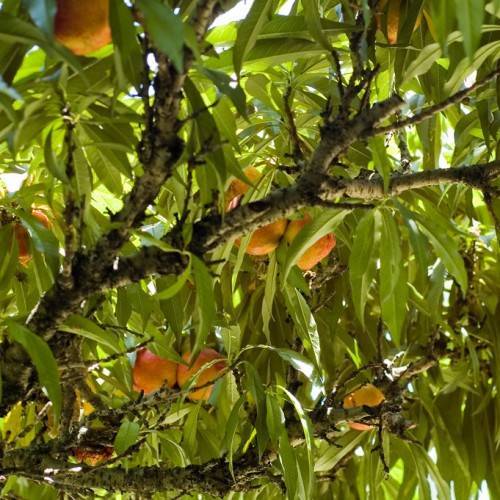
dwarf nectarine
Prunus persica var. nectarina STARK SUNGLO
Cycle:
Perennial
Watering:
Average
Hardiness Zone:
5 - 8
Flowers:
Flowers In Spring
Sun:
Full sun
Fruits:
Fruits Ready In Summer
Edible:
Yes
Leaf:
Yes
Growth Rate:
Low
Maintenance:
High
Drought Tolerant:
Yes
watering
Dwarf nectarine trees should be watered deeply but infrequently. A weekly watering of 1/2 to 1 inch of water is ideal. To determine the amount of water your tree needs, check the soil with a soil moisture meter, approximately 1-2 inches below the surface. If the soil is dry, it is time to water. Water thoroughly, until you see it running out the bottom of the container, or wetting the entire rootball if planted in the ground. Ensure good drainage is occurring afterwards. In the heat of summer, you may need to water twice a week in order to keep the soil moist, especially when temperatures reach above 90 degrees Fahrenheit. If you’re unable to water twice a week during this time, try to give it an extra deep soak once a week, instead. Dwarf nectarines benefit from an occasional misting of their leaves. This helps keep them cool in high temperatures in addition to increasing humidity. A thin layer of compost over the soil or mulching also help keep the soil moist during summer months.
sunlight
The dwarf nectarine (Prunus persica var. nectarina STARK SUNGLO) is a fruit tree that prefers sunny, well-lit locations. It needs at least 8 hours of direct sunlight each day to grow and produce fruit. The tree will thrive in sunny spots that receive the full range of morning light (6-10am) and afternoon light (3-7pm). However, when temperatures become too hot during peak summer months, the Stark Sunglo dwarf nectarine should receive partial shade in the afternoons to avoid scorched leaves or sunburn on its fruits. When grown in containers, the nectarine should be placed in the sunniest spot available.
pruning
When to Prune : Pruning dwarf nectarines should begin when the tree and is 3-4 years old. The best time of year to prune is during the late winter or early spring, before new growth begins. How Much to Prune : Dwarf nectarines require careful pruning to maintain its size and shape and to encourage productivity. The goal is to thin out the tree and encourage production of large, high-quality fruit. The amount of pruning depends on the size and health of the tree, but should usually be limited to removing dead, damaged, or diseased branches, and thinning out weak or congested growth. Any branches growing downward should also be removed. As a general rule of thumb, prune no more than 25 per cent of the total branches off the tree.
